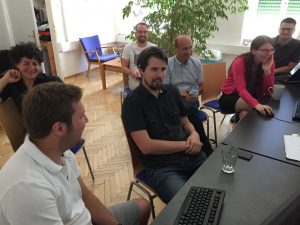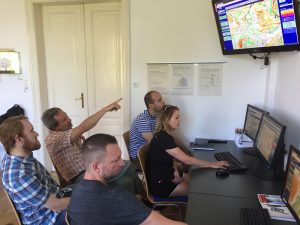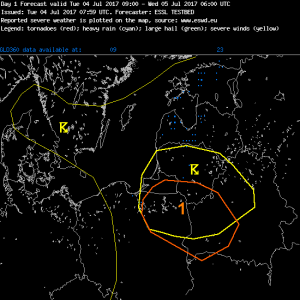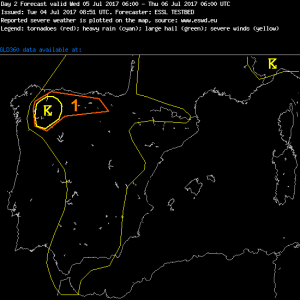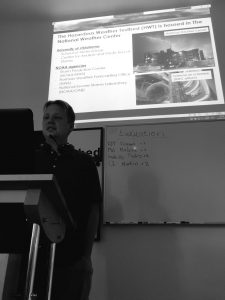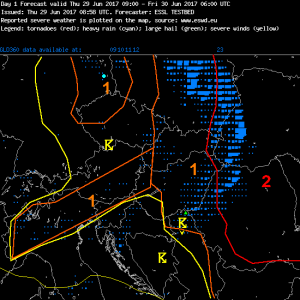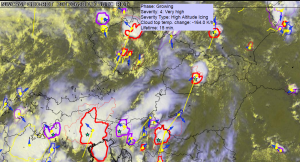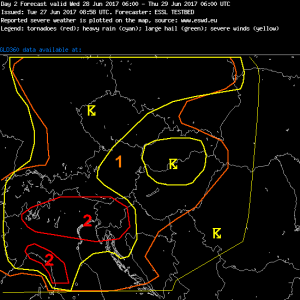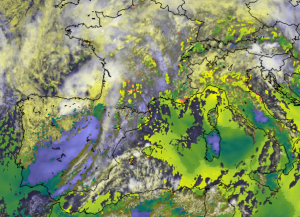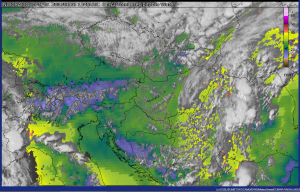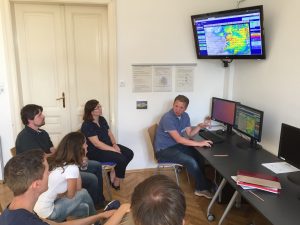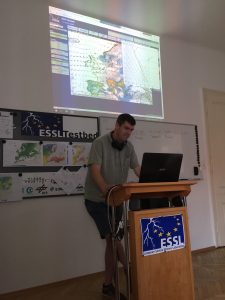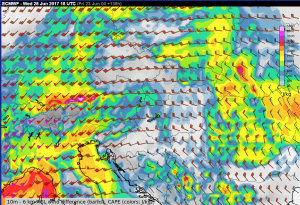Today the participant phase of the ESSL Testbed 2017 comes to an end. The upcoming months will be dominated by the reporting phase. And soon we will start to prepare the 2018 edition. Dates are already fixed: 11 June to 13 July 2018.
We thank all partners and participants of the ESSL Testbed 2017. Weather was quite interesting this year. And we are very much looking forward to continued and new collaborations for the coming years.
Here two product examples of this year:

Image: EUMETSAT NWCSAF RDT product overlay of yesterday 18 UTC with highlighted cell near Paris (mouse-over cell properties).
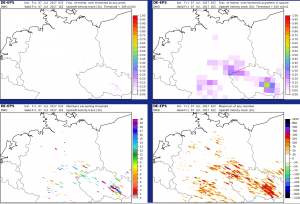
Image: DWD COSMO-DE EPS updraft helicity tracks for today 16 UTC: some regions show high signals.

